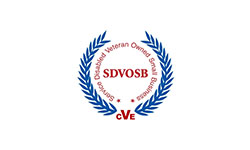ELECTRICAL LADDER DRAWINGS, SCHEMATICS, AND DRAWINGS
This development course is available in both virtual and in-person, instructor-led formats, it is a two-day Electrical Ladder Logic, Drawings, Schematics, and Diagrams course that delivers essential skills in the field of equipment maintenance, installation, or modification: the ability to read and understand electrical ladder logic, drawings, schematics, and diagrams.
Description:
This course covers several types of industrial control prints for a variety of different motor-driven processes, with an emphasis on the differences between type and the purposes and flow of each. Team members will participate in exercises to create schematic diagrams based on circuit descriptions and will learn to interpret schematic drawings to provide verbal or written circuit descriptions.
Course Outline:
Day One – Topics
Electrical Fundamentals for Print Reading
1. Types and Uses of Electrical Drawings
2. Clarifying Terminology
3. Effects of Current Flow
4. Voltage Drop Calculations
5. Understanding Ampacity Tables
6. Importance of Electrical Drawings
7. NEC® Drawing Requirements
8. Ohm’sLaw
Industrial Control Prints
1. Component Symbols
a. Transformers b. Fuses
c. N.O. and N.C. Relay Contacts
d. Relay Coils
e. Switches
f. Automatic Control Devices
g. Timers
h. Sensors
i. Motors
j. Solenoids
k. Heaters
l. Grounds m. Others
2. Understanding Single-Line Diagrams
a. Understanding Relay Operation
b. ElectricalSchematicDiagrams
c. Motor Termination Diagrams
d. Electrical Ladder Diagrams for Control Circuits
e. International Drawings: IEC Symbols
f. NEMA and IEC Circuit Comparison
g. Reading & Interpreting Basic Motor Control Circuits
h. Forward-Reverse Motor control
Day Two – Topics
Real-World Applications
1. Conveyor Timing
2. Air Compressors
3. HVAC Controls
4. FluidLevelControls
5. Material Handling Systems
6. Process Temperature Controls
7. Exterior Lighting Controls
8. Generator Controls
9. ChemicalProcessControls
10.Variable Frequency Drives
11. Others
PLC Ladder Diagrams
1. PLC Basics – Inputs & Outputs
2. Comparison of Relay Logic to PLC Ladder Logic
3. Real-WorldApplications










